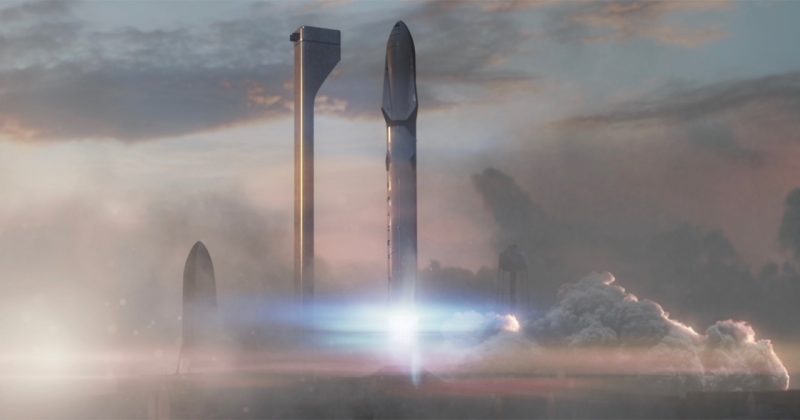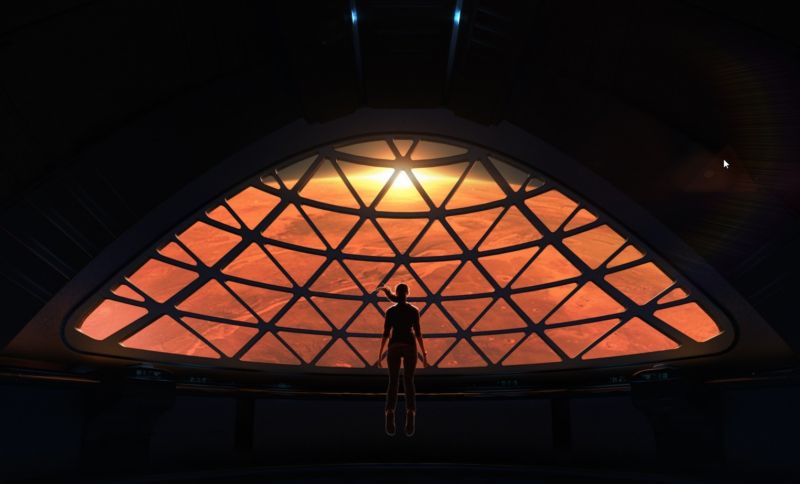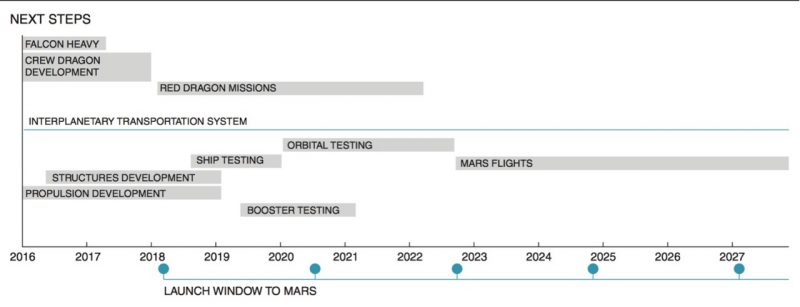
Last September, Elon Musk announced SpaceX’s plan to make human life multi-planetary by building a self-sustaining, one-million-person civilization on Mars. Now, he’s authored a 15-page commentary adapted from his original announcement – titled Making Humans a Multi-Planetary Species – published in the journal New Space, which describes itself as “the only international peer-reviewed journal dedicated to the era of new space innovation.” The manifesto is available for free until early July and is a must-read for space and sci fi fans.
Musk sounds starry-eyed while describing the reasons for going to Mars (“It would be quite fun to be on Mars because you would have gravity that is about 37% of that of Earth …”), but who can fault him for that? His starry-eyed-ness likely led him to founding SpaceX itself, which has taken significant (and, yes, fun) steps toward rocket reusability, which is the ultimate key to lowering the cost of space travel. Musk is also a co-founder of Paypal and Tesla Motors, by the way, and he has a hand in the new company SolarCity, a photovoltaics products and services company, whose goal is to provide alternatives to burning fossil fuels.
So he’s someone who, to say the least, thinks big and looks ahead.
At the core of his plans for Mars is the idea that the costs need to be within reach for ordinary folk like you and me; otherwise, if it’s too expensive, who will populate a future Mars city? In his recent manifesto, as in his initial announcement last September, Musk uses the idea of lowering costs to less than US $200,000, or about the median cost of a house in the U.S.


And he acknowledges:
It is a bit tricky because we have to figure out how to improve the cost of trips to Mars by five million percent. This translates to an improvement of approximately four-and-a-half orders of magnitude. This is not easy. It sounds virtually impossible, but there are ways to do it.
These are the key elements that are needed in order to achieve the four-and-a-half orders of magnitude improvement. Most of the improvement would come from full [rocket] reusability — somewhere between two and two-and-a-half orders of magnitude.
The other two orders of magnitude would come from refilling in orbit, propellant production on Mars, and choosing the right propellant.
He goes into detail in his commentary about these four key elements, and he also describes the “system architecture” of the Mars plan, how many spacecraft will be needed, how many trips to Mars, what to do with spacecraft once they’ve made the trip, and so on. Musk said he likes the word “system” for his Interplanetary Transport System because it has 4 parts: a rocket and spaceship, plus a fueling tanker and propellant depots.
And, because he’s trained as an engineer, Musk can’t resist getting into some gnarly details about the skyscraper-sized rocket itself, which will be designed to ferry 100 people at a time to Mars, at a cost of $200K per ticket. This rocket, by the way, will be nearly four times as powerful as the mighty Saturn V booster that lifted the first (handful of) astronauts to the moon. Musk has described it as:
… by far the biggest flying object ever.


But the coolest thing of all comes when he begins talking about next steps, and you realize that Musk doesn’t see this Mars idea as something for the far future. He sees it as something for the immediate future. What he said about his timeline is extremely compelling and sounds like Musk’s own voice (and so provides a glimpse into the mind of a visionary):
… we are going to try to make as much progress as we can on a very constrained budget, on the elements of the interplanetary transport booster and spaceship. Hopefully, we will be able to complete the first development spaceship in maybe about 4 years, and we will start doing suborbital flights with that.
It has enough capability that you could possibly go to orbit if you limit the amount of cargo on the spaceship. You would have to really strip it down, but in tanker form, it could definitely get to orbit. It cannot get back, but it can get to orbit.
Maybe there is some market for the really fast transport of things around the world, provided we can land somewhere where noise is not a super-big deal because rockets are very noisy. We could transport cargo to anywhere on Earth in 45 minutes at the most. Hence, most places on Earth would be 20–25 minutes away. If we had a floating platform off the coast of New York, 20–30 miles out, you could go from New York to Tokyo in 25 minutes and across the Atlantic in 10 minutes. Most of your time would be spent getting to the ship, and then it would be very quick after that. Therefore, there are some intriguing possibilities there, although we are not counting on that.
Then, there is the development of the booster. The booster part is relatively straightforward because it amounts to a scaling up of the Falcon 9 booster. So, we do not see that there will be many showstoppers there.
Then it will be a case of trying to put it all together and make this actually work for Mars. If things go super-well, it might be in the 10-year timeframe, but I do not want to say that is when it will occur. There is a huge amount of risk. It is going to cost a lot. There is a good chance we will not succeed, but we are going to do our best and try to make as much progress as possible.

If all of the above doesn’t convince you that Elon Musk is one of the most interesting people on planet Earth to watch, well, try the video just below (nearly two hours). It’s Musk’s complete announcement on September 27, 2016 of his plan to go to Mars at the 67th International Astronautical Congress in Guadalajara, Mexico. The talk itself starts about 20 minutes in.
Or, read Musk’s Mars manifesto, available for free until early July.
Mars, ho!
Bottom line: Elon Musk has published a 15-page commentary outlining his plans to bring the colonization of Mars closer to reality.











